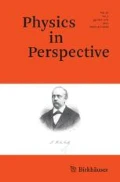Francis Bacon had a terrific idea. Enough of learning about nature by happenstance or mere trial and error! What if each country created a community of scientists who would interrogate nature systematically? What if these countries then used the findings of such systematic inquiry to guide their actions? Would the effect not be to help human life flourish? Bacon thought so, and his vision animates his posthumously published parable, New Atlantis.
Over the years, developed countries have largely enacted Bacon’s far-sighted idea, creating and maintaining scientific facilities and supporting communities of scientists to work in them. Yet where Bacon envisioned a seamless relation between the scientific community and the island society of the New Atlantis, such relations in the modern world have been marked by friction. Friction can arise between scientific facilities and the surrounding community. It can also arise between research facilities and the politicians who control the purse strings.
Both of these frictions are evident in “The Fiftieth Anniversary of Brookhaven National Laboratory: A Turbulent Time,” by Peter D. Bond. Bond, a physicist who served in many administrative roles at Brookhaven, including as its interim director and senior advisor to the director, writes about the dramatic events that took place in 1997 at the lab. At the beginning of that year, a tiny leak of tritium-containing water from the storage pools for the spent fuel of Brookhaven’s research reactor—a leak that posed no evident health threat to employees or to the surrounding community—set off a political and public relations firestorm that cast doubt on the lab’s safety record and brought calls for the lab’s closure by activists. In the wake of the ensuing controversy, the lab director resigned, but matters did not end there: the Department of Energy fired the lab’s contractor and terminated the reactor. Brookhaven scientists found themselves in the frustrating and disturbing position of having almost no “media standing,” as the expression goes. The scientists were suspected of being tainted by conflict of interest and by lack of concern for public health and safety. Their voices were drowned out by activists with more colorful quotes, more apocalyptic pronouncements, and more eye-catching imagery.
Bond’s article is a first-hand account of the inside story. It is sobering and even a little frightening, for it is clear that the frictions in 1997 between Brookhaven National Laboratory and certain members of the community had little to do with conventional politics; the activists denouncing the laboratory came from all points on the political spectrum. Rather, the frictions arose from the special, often conflicting roles that modern scientific communities have to play.
Scientific communities have their own disciplinary norms and values and are historically and practically important to—yet independent of—the larger culture that sustains them. Those communities can sometimes acquire negative meanings within that larger culture, representing the encroachment of the government, for instance, or becoming emblems of danger, secrecy, carelessness, or political incompetence. When science presumes to stand apart from society, it finds itself all the more susceptible to the prevailing political winds if it fails to heed them.
Bacon’s island utopia was founded on a hopeful but erroneous assumption: it presumed society’s unquestioning acceptance of the aims and practices of nature’s interrogators. Modern science often proceeds in a Baconian spirit. It champions vigorous, systematic, and socially supported natural investigations, and it also tends to assume that social support—in the form of funding and other resources—is naturally present in a way that gives scientists broad latitude to determine disciplinary norms. In most cases this is true, but that latitude has its limits. The story of Brookhaven’s golden jubilee show just how difficult that line can be to navigate as scientists try to balance their scientific, social, and political roles.
The frictions between these several roles are among the most important problems that modern civilizations faces. How do these frictions arise? How, if possible, can they be reduced? Such issues will be major challenges facing scientific facilities in the twenty-first century. The first step in facing these challenges is to develop accounts of them such as Bond has provided in this issue. We encourage our readers to submit their own accounts and analyses so that Physics in Perspective can continue to help scientists and society find better ways of working together.
Author information
Authors and Affiliations
Corresponding author
Rights and permissions
About this article
Cite this article
Crease, R.P., Martin, J.D. & Pesic, P. When Science and Politics Collide. Phys. Perspect. 20, 163–164 (2018). https://doi.org/10.1007/s00016-018-0222-2
Published:
Issue Date:
DOI: https://doi.org/10.1007/s00016-018-0222-2

